
Steve Mason/Photodisc/Getty Images
The commute to work or school continues even when winter temperatures fall and snow and ice cover roads and walkways. Winter slip-and-fall accidents can seriously injure pedestrians in the same way car crashes injure motorists on slick roads. Keep control of yourself when walking by adding traction control to your shoes.
Shoe Add-Ons
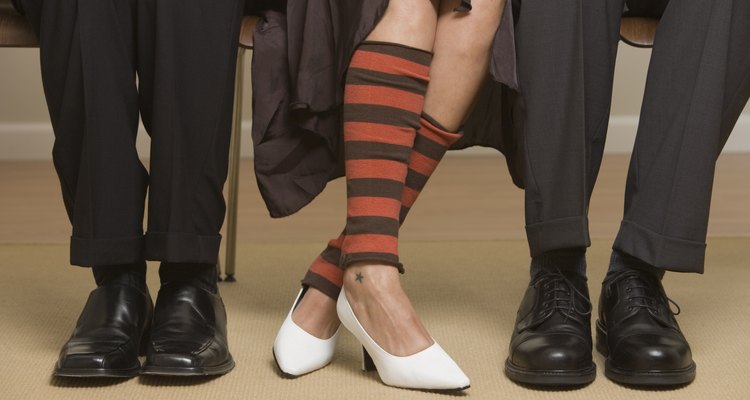
Comstock Images/Stockbyte/Getty Images
Your regular work or school dress or casual shoes might not provide enough traction in the snow and ice. If you can, choose a shoe with thick tread to increase the surface area of potential friction-producing surfaces. As an alternative, purchase slip-on shoe snow cleats that help your foot break the slick surface of the snow and ice with each step and firmly grasp the walkway.
Some work boots have an accessory option of add-on snow cleats. You place the cleats one by one into the sole of the boot and take them off when you no longer need them. If you wear removable snow cleats or a slip-on snow cleat overshoe, remember to take them off when you get to your destination since the cleats can damage floors.
To protect your shoes, try an overshoe that slips over your regular shoe. An overshoe made of rubber or polyurethane can provide more traction than a slick sole. If you can find an overshoe with some texture on the sole, it might work even better to reduce slipping.
One study published in the July 3, 2009, "New Zealand Medical Journal" suggests that wearing a regular sock over your shoes or boots might increase traction and reduce winter slip and fall accidents dramatically. Although the look of socks over shoes or boots might not be the best fashion statement, in a pinch it can help keep you safe.
Other Safety Tips
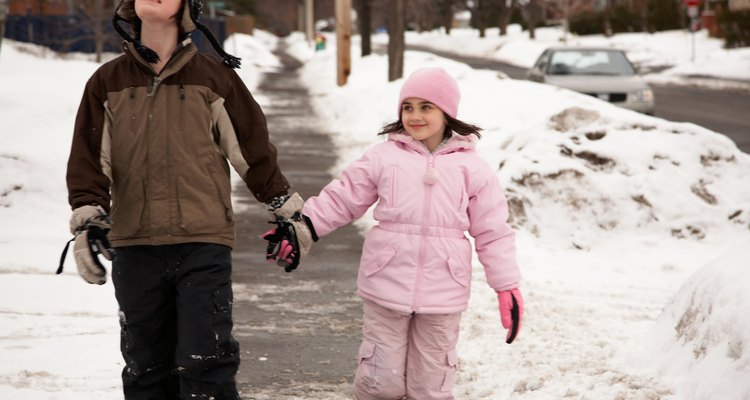
Jupiterimages/Photos.com/Getty Images
When walking outdoors in slippery conditions, stay on treated surfaces as much as possible. Even then, there can be ice and slick spots that you can't see, so slow down and take shorter strides. Keep your body low when walking to increase your balance.
If you start to fall, resist the urge to catch yourself with your arms. Tuck your head and chin and try to roll to avoid falling with the full force on your head.
Related Articles
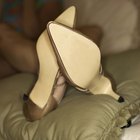
How to Increase the Grip on a Shoe's ...

How to Lower a Boot Heel
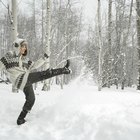
What Type of Shoes Should Be Worn for ...
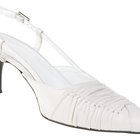
How to Fix a Slingback Shoe

How to Reinforce Your Shoes

Internal Bruises on the Inner Knee From ...
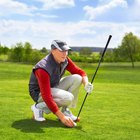
Blisters After Golf

How to Add Arch Support to Shoes

How to Keep Flip-Flops From Slipping

How to Get the Tongue of Your Shoe to ...

How to Keep My Shoes From Sliding While ...
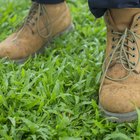
Ways to Break in Steel-Toed Boots

How to Give Your Shoe Grip

How to Keep Toes From Squeezing Out of ...

How to Wear Steel Toe Shoes

What to Do If Your Boots Are Too Big

How to Avoid Bending Your Uggs

How to Roughen Up the Soles of Your ...
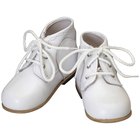
How to Make Rubber Soles Less Slippery
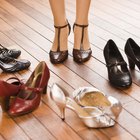
What Are the Benefits of High Heel ...
References
- "Preventing Winter Falls: a randomised controlled trial of a novel intervention"; Parkin L, Williams SM, Priest P; NZ Med J. 2009 Jul3;122(1298):31-8
- Purdue Today: Winter Walking: Tips to avoid slip and fall injuries
- University of Iowa Public Health: Farm Safety Review March 2007: Be careful on the ice
Writer Bio
Andrea Lott Haney writes articles and training materials for food industry publications. Having studied foodservice sanitation, nutrition and menu planning at Purdue University, Lott Haney has more than 10 years of experience as a catering and event planner for luxury hotels and currently tours the Midwest as a corporate customer service trainer and consultant.
Photo Credits
Steve Mason/Photodisc/Getty Images